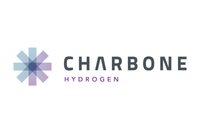An increased output from the US is offsetting OPEC cuts impacting oil prices and rising concerns that the supply glut will continue.
Oil prices fell five percent to their lowest level this year, as US crude inventories surged on Wednesday for the ninth straight week, a new record high. Concerns are rising that an oil supply glut could continue, even with the Organization of the Petroleum Exporting Countries’ cuts in place.
US supplies climbed 8.21 million barrels to the highest in weekly data going back to 1982 as production rose to the highest in a year, according to the Energy Information Administration. The increase was four times what analysts expected.
“The big rally in December, after the OPEC agreement, was based on expectations that the cuts would balance the market. While it looks like OPEC has cut more than 1 million barrels a day of output it’s difficult to see any impact on US stockpiles,” Mike Wittner, head of commodities research at Societe Generale, said.
Oil prices have been supported by a supply cut that started at the beginning of 2017 by OPEC members and non-members, including Russia. Compliance levels have been high, despite low market expectations, reaching 90 percent in the first months of the deal.
Kuwait Oil Minister Essam Al-Marzouq said OPEC’s compliance with an oil output cut stood at 140 percent in February, while non-OPEC members compliance was 50-60 percent.
“Saudi Arabia has voluntarily cut by more than its share to increase confidence in the output reduction issue (agreement),” he told journalists in Kuwait.
Similarly, Saudi Energy Minister Khalid al-Falih said on Tuesday (March 7), that total output reductions have exceeded 1.5 million barrels per day (bpd) out of almost 1.8 million bpd pledged.
However, Saudi Arabia will maintain its policy of managing production only for “a restricted period of time,” such as to alleviate the impacts of financial crisis, economic recession or a temporary inventory glut, Falih told CNBC. OPEC will only act to accelerate rebalancing and will then let the free market do its work, he added.
On Wednesday (March 8), US West Texas Intermediate crude CLc1 fell to its lowest since January 18, tumbling $2.17 or 4.1 percent, to $50.97 per barrel at 1:40 p.m. EST, while Brent crude LCOc1 slumped to its lowest since January 18 at $53.82, down $2.10 or 3.8 percent.
OPEC’s Capacity to Grow
Despite OPEC’s global effort to reduce output in 2017, the organization will increase its production capacity by about twice as much as previously thought, led by expansion in Iran and Iraq, the International Energy Agency said.
“The group is building capacity even as it reduces in 2017, in anticipation of higher demand,” said the IEA, which advises most of the world’s biggest economies on energy policy. “Capacity growth is concentrated in the low-cost Middle East, with Iraq leading the gains.”
OPEC will raise output capacity by 1.95 million barrels a day from 2016 to 2022, with a third of the gains concentrated in Iraq, the IEA added.
Supply Crunch Ahead?
That said, is a crude oil supply shortfall still possible? The IEA seems to believe so, as the contraction in global spending in 2015 and 2016 and growing global demand means the world could well face a supply crunch by 2020 if new projects are not soon given the go-ahead, the agency said.
Oil demand will rise over the coming five years, crossing the 100 million bpd mark in 2019 and hitting 104 million bpd by 2022, driven entirely by emerging economies. As a result, prices could rise sharply.
But according to Jeff Currie, the lead commodities researcher at Goldman Sachs, oil prices will settle in the $55-$60 range in the long term.
Similarly, BP (NYSE:BP) CEO Bob Dudley said: “We’re not planning on an uptick in oil prices. We’re going to plan on $55 to $60 … for the next five years, and we’re going to live within a strict capital diet, between $15 billion and $17 billion.”
Don’t forget to follow us @INN_Resource for real-time news updates.
Securities Disclosure: I, Priscila Barrera, hold no direct investment interest in any company mentioned in this article.





